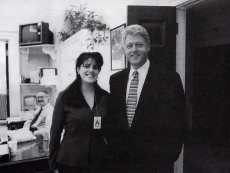
Email: stella@papersnail.co.uk
Total Article : 28
About Me:Sixth form student studying Politics, Biology and Psychology. I'm interested in a range of topics such as music, current affairs, women's issues and world politics.

Monica Lewinsky gained global notoriety in 1998 following the scandal of her sexual affair with President Bill Clinton. Lewinsky faced public humiliation after what is widely accepted to be the first scandal broken via the internet. This is what is significant about the Lewinsky ordeal – she was the first woman to be publicly tormented and humiliated via the internet, the first instance of large-scale cyber-bullying. However, the comments and articles written about Lewinsky were not unprecedented, facing grueling, misogynistic comments from political and media figures. Monica Lewinsky has recently made a strong return as an anti-bullying activist in an attempt to “give a purpose to (her) past” as she wrote in an article for Vanity Fair.
For my generation, the Lewinsky scandal was before our time, most people born post 1995 will have little to no knowledge of who Monica Lewinsky is or why it is important to learn the lessons of her case. What drew my attention to Lewinsky was her recent TED talk, entitled “The price of shame” – where she referred to herself as “Patient Zero of online shaming”. My interpretation of Lewinsky’s sudden revival is that she now has the option to magnify her voice to millions via the modern day’s most powerful weapon – social media. Although the internet had just emerged on a wide scale in 1998 when the Lewinsky scandal broke, social media was yet to be developed and so Lewinsky’s opportunity to fight back or access hashtag support was non-existent. Lewinsky’s ordeal sadly exemplifies many cases of slut shaming and cyber-bullying, which too often do not end in the same light. There have been countless instances of teenage suicides due to the merciless slut shaming of girls via websites such as Ask.fm, this is why the Lewinsky ordeal suggests that our problem is definitely not technological; it’s cultural. Without the historic, institutionalised shame that accompanies female sexuality, social media and cyberbullying would not possess the power that they do.
Media attacks on Monica Lewinsky focused vastly and unreasonably on her weight; television show host David Letterman made the famous comment, "President Bush has authorized the drop of 15,000-pound bombs on Afghanistan. I believe that is the heaviest ordered drop by a president since ... well, Monica.” Even high-profile feminist writers joined in on the humiliation of Lewinsky, an example being Nancy Friday in the New York Observer who explained how Lewinsky could “rent out her mouth” for a living. The most disheartening part of the ordeal is that Monica’s life was, and still is, completely defined by a few sexual acts in a way that Bill Clinton’s never was. When Bill Clinton is referred to in context of the scandal, he ‘committed adultery’, whereas Monica Lewinsky is branded as a slut, whore, even a “narcissistic loony toon” as stated by Hillary Clinton herself. Bill Clinton maintained his serious politician status and carried on his presidential term until 2001 where he was waved goodbye with grace and respect, all the while Lewinsky was at the hands of pop-culture punch lines and gained her status as a reliable talk-show television gag.
I think the Monica Lewinsky scandal reveals much more about social attitudes and the shame-culture surrounding female sexuality than it does about the internet, which facilitated it. As I stated earlier, Monica Lewinsky’s problem, and indeed our problem, was not technological at all – it was indefinitely cultural.
Image Credits: http://uk.businessinsider.com/

0 Comment:
Be the first one to comment on this article.